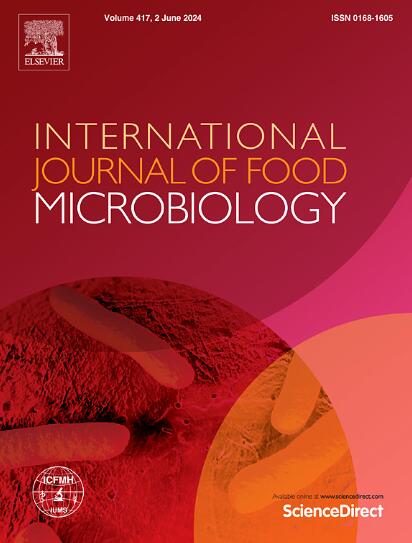The use of autochthonous Saccharomyces cerevisiae strains as a strategy to enhance aroma variability and typicity of Savatiano wines; RNAseq-based transcriptome comparison of indigenous strains under winemaking conditions
IF 5.2
1区 农林科学
Q1 FOOD SCIENCE & TECHNOLOGY
International journal of food microbiology
Pub Date : 2025-05-19
DOI:10.1016/j.ijfoodmicro.2025.111249
引用次数: 0
Abstract
The connection between wine microbiota and terroir has become increasingly significant in the wine industry in recent years. Indigenous yeasts have emerged as a valuable tool for imparting unique qualities to wine, enhancing the aroma characteristics specific to a given wine-producing region. This study aimed to isolate indigenous Saccharomyces cerevisiae strains from spontaneous fermentations and assess their impact on the fermentative performance, chemical composition, and wine aroma profiles, using two commercial strains serving as controls. Fermentation kinetics, organic acids, ethanol, and glycerol content were monitored daily using HPLC. The produced wines were evaluated for their organoleptic properties and underwent volatile compound profiling using GC–MS. Additionally, the gene transcription patterns of the isolated yeasts and their connection to the resulting oenological traits were further explored, employing RNAseq during fermentation. Our study revealed that native strains supported volatilome, promoted ester and terpene formation, enhanced fruity, floral, and sweet attributes, and contributed to a distinct wine aroma compared to the control ones. Of particular interest were the differences in organic acid metabolism and glycerol formation. Transcriptomes of the indigenous yeasts identified different genomic responses and explained the variations in metabolite production between strains. In conclusion, the data obtained highlights the different transcriptomic and metabolic profiles of the indigenous yeasts isolated during this study. Besides, the importance of understanding yeast genomics and metabolism to achieve promising sensory characteristics and unique wine styles was emphasized, and these insights could contribute to the development of new products while preserving the identity of a region.
利用本地酿酒酵母菌作为提高萨瓦蒂亚葡萄酒香气变异性和典型性的策略酿酒条件下本地菌株基于rnaseq的转录组比较
近年来,葡萄酒微生物群与风土之间的关系在葡萄酒行业中变得越来越重要。本土酵母已经成为一种宝贵的工具,可以赋予葡萄酒独特的品质,增强特定葡萄酒产区的香气特征。本研究旨在从自发发酵中分离出本土酿酒酵母菌株,并以两种商业菌株作为对照,评估其对发酵性能、化学成分和葡萄酒香气特征的影响。利用高效液相色谱法监测发酵动力学、有机酸、乙醇和甘油含量。用气相色谱-质谱法评价了生产的葡萄酒的感官特性,并对挥发性化合物进行了分析。此外,在发酵过程中利用RNAseq进一步探索了分离酵母的基因转录模式及其与酿酒性状的关系。我们的研究表明,与对照菌株相比,本地菌株支持挥发素,促进酯和萜的形成,增强水果,花香和甜味属性,并贡献了独特的葡萄酒香气。特别令人感兴趣的是有机酸代谢和甘油形成的差异。本地酵母的转录组鉴定出不同的基因组反应,并解释了菌株之间代谢物产生的差异。总之,获得的数据突出了本研究中分离的本地酵母的不同转录组学和代谢谱。此外,还强调了了解酵母基因组学和代谢对于实现有希望的感官特征和独特的葡萄酒风格的重要性,这些见解可以有助于新产品的开发,同时保持一个地区的身份。
本文章由计算机程序翻译,如有差异,请以英文原文为准。
求助全文
约1分钟内获得全文
求助全文
来源期刊
CiteScore
10.40
自引率
5.60%
发文量
322
审稿时长
65 days
期刊介绍:
The International Journal of Food Microbiology publishes papers dealing with all aspects of food microbiology. Articles must present information that is novel, has high impact and interest, and is of high scientific quality. They should provide scientific or technological advancement in the specific field of interest of the journal and enhance its strong international reputation. Preliminary or confirmatory results as well as contributions not strictly related to food microbiology will not be considered for publication.

 求助内容:
求助内容: 应助结果提醒方式:
应助结果提醒方式:


